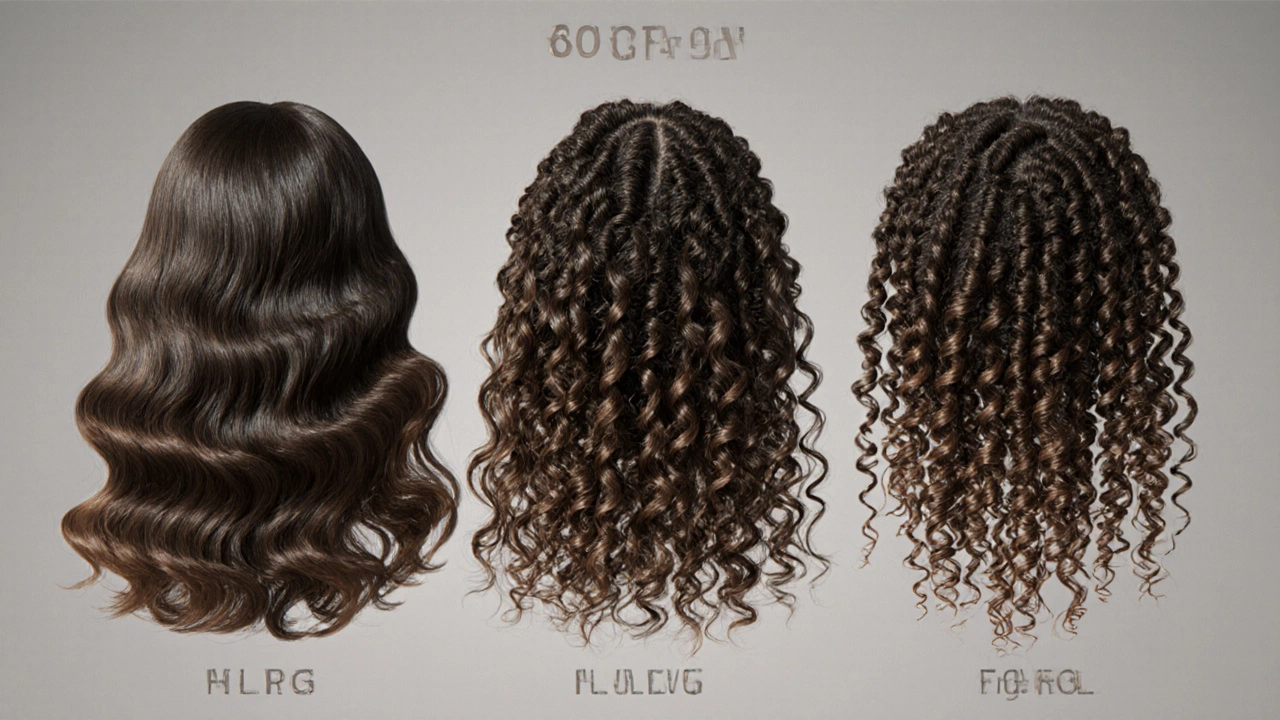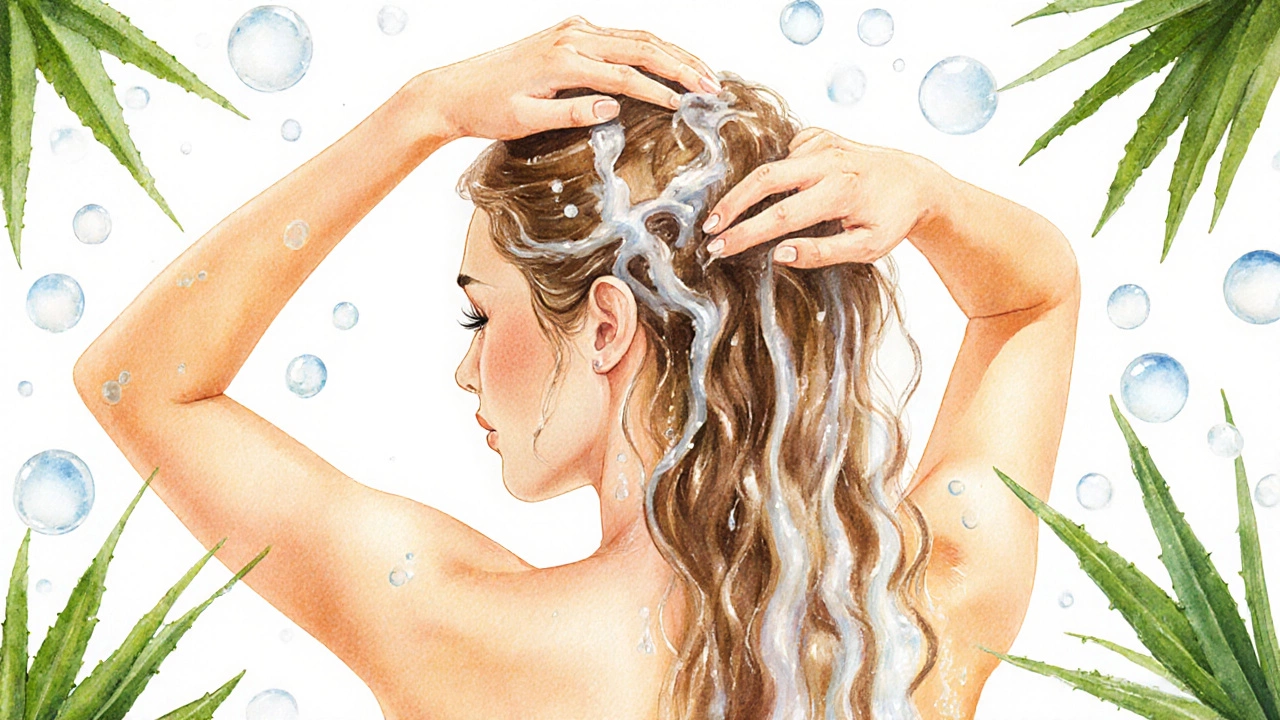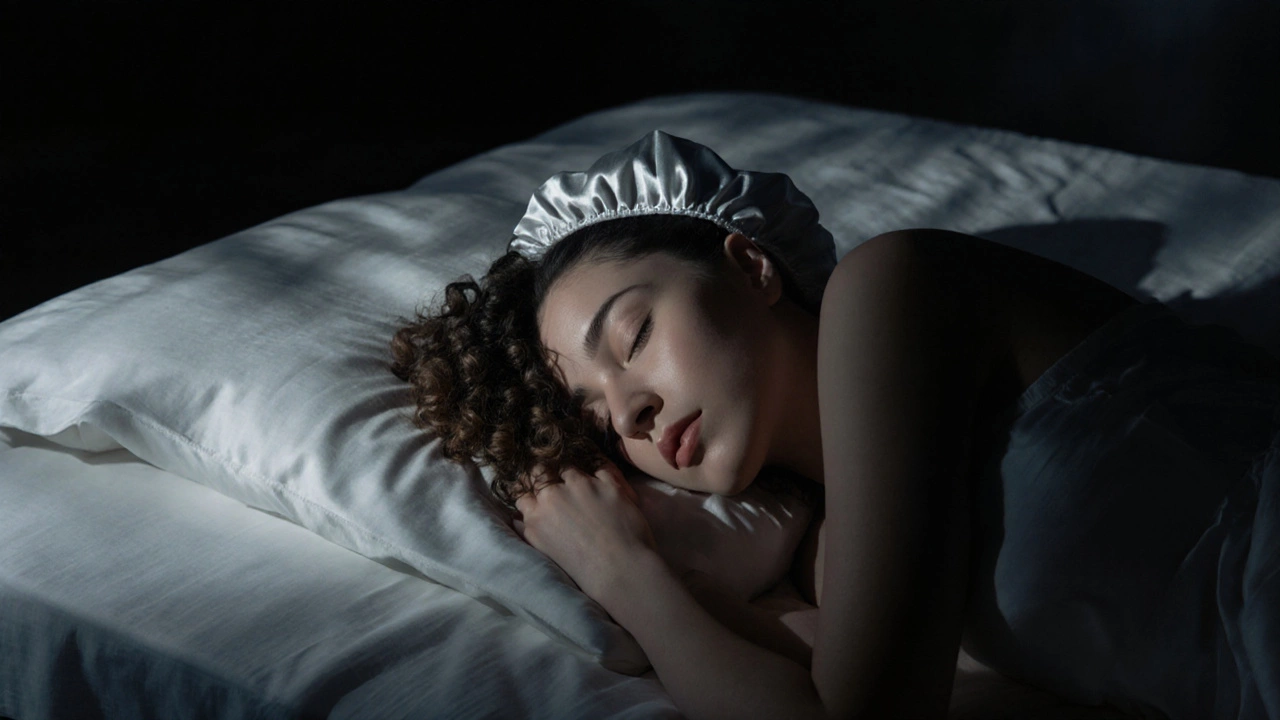
Type 3 Hair Subtype Checker
This interactive tool will help you determine your specific type 3 hair subtype (3A, 3B, or 3C) based on your curl pattern, density, and texture. Answer the questions below to get your personalized result.
Hair Subtype Assessment
Your Type 3 Hair Subtype
Your subtype is:
If you’ve ever scrolled through curly hair forums or read product labels and seen type 3 hair mentioned, you’re not alone. It’s one of the most common terms in curly hair communities-but it’s also one of the most misunderstood. So what does type 3 hair actually mean? And why does it matter for your routine?
What Is Type 3 Hair?
Type 3 hair is the category used to describe naturally curly hair. It’s not just "curly" in a vague way-it’s a specific classification within the Andre Walker Hair Typing System, created in the 1990s to help people understand their curl patterns and choose the right products. Type 3 hair falls between wavy (type 2) and coily (type 4). It’s defined by distinct, springy curls that form full loops or S-shapes.
Unlike straight or wavy hair, type 3 curls have more volume and texture. They’re also more prone to dryness because natural oils from the scalp struggle to travel down the curls. That’s why people with type 3 hair often say their hair feels frizzy, tangled, or lacks shine-even with lots of product.
The Three Subtypes: 3A, 3B, and 3C
Type 3 isn’t one-size-fits-all. It’s broken into three subtypes based on curl diameter, density, and how defined the curls are:
- 3A: Loose, shiny curls that look like a wide S-shape. These curls are often springy and have a diameter similar to a sidewalk chalk. They’re the most manageable of the type 3 group but still need moisture to avoid frizz.
- 3B: Tighter, more defined curls that resemble ringlets. Think of the size of a marker pen. These curls have more volume and are more prone to dryness. They often look fuller but can tangle easily if not handled gently.
- 3C: Dense, corkscrew-shaped curls that are tightly coiled. These are about the size of a pencil or straw. They’re the most fragile of the type 3 group and need the most hydration. Many people with 3C hair say their curls look like一团小弹簧 (a bunch of tiny springs).
Most people fall somewhere between these subtypes. You might have 3B curls on the sides and 3C at the nape of your neck. That’s normal. Your hair doesn’t have to fit perfectly into a box to be valid.
Why Knowing Your Hair Type Matters
Using the wrong products on type 3 hair is like wearing running shoes to hike a mountain. You might get by for a while, but you’ll end up sore and frustrated.
For example:
- If you use a sulfate shampoo on 3C hair, you’ll strip away natural oils and leave curls brittle and frizzy.
- If you apply heavy butters to 3A hair, you might weigh it down and lose the bounce.
- If you brush dry curls, you’ll break them and create flyaways.
Knowing your subtype helps you pick products that support your curl pattern-not fight it. It’s not about following trends. It’s about working with your hair’s natural structure.

What Type 3 Hair Needs Most
Three things dominate every successful type 3 hair routine: moisture, gentle handling, and protection.
Moisture is the biggest challenge. Curly hair doesn’t retain water well. That’s why you need hydrating ingredients like aloe vera, glycerin, and hyaluronic acid. Look for leave-in conditioners and curl creams that list water as the first ingredient.
Gentle handling means avoiding brushes and regular combs. Use a wide-tooth comb or your fingers only when your hair is wet and coated in conditioner. Detangle from the ends up, not from the roots down. This prevents breakage and keeps your curl pattern intact.
Protection means reducing friction. Sleep on a satin or silk pillowcase. Wrap your hair in a satin bonnet or use a pineapple method (gathering hair loosely on top of your head with a scrunchie). This keeps curls from getting smashed and frizzy overnight.
Common Mistakes People Make with Type 3 Hair
Even with good intentions, many people mess up their routine. Here are the top five mistakes:
- Washing too often: Type 3 hair doesn’t need daily shampoo. Washing every 4-7 days is enough. Overwashing strips oils and triggers more frizz.
- Using the wrong conditioner: If your conditioner feels greasy or leaves residue, it’s probably too heavy. Look for lightweight, silicone-free formulas.
- Skipping the curl refresher: On day 3 or 4, your curls might look flat. A quick spritz of water mixed with a drop of leave-in conditioner can revive them without rewashing.
- Using heat without protection: Blow dryers, flat irons, and curling wands can damage curls over time. If you must use heat, always apply a thermal protectant.
- Ignoring the ends: The ends of type 3 hair are the oldest and most fragile parts. Trim every 8-12 weeks to prevent split ends from traveling up the shaft.
Product Recommendations That Actually Work
Not all curly hair products are created equal. Here are a few that consistently get results from real users with type 3 hair:
- Shampoo: SheaMoisture Coconut & Hibiscus Curl & Shine Shampoo - sulfate-free and packed with natural oils.
- Conditioner: As I Am Coconut CoWash - a cleansing conditioner that cleanses without stripping.
- Leave-in: Kinky-Curly Knot Today - lightweight, no buildup, and works as a detangler and styler.
- Curl cream: Miss Jessie’s Pillow Soft Curls - gives definition without crunch or stiffness.
- Deep conditioner: Mielle Organics Babassu & Mint Deep Conditioner - used once a week for intense hydration.
These aren’t endorsements. They’re products that have been tested by thousands of people with type 3 hair and consistently rated for results-not marketing.

Real-Life Example: How One Person Transformed Their Hair
Take Maya, a 28-year-old from Wellington. She’d been straightening her hair for years because she thought her curls were "bad." She started using the type 3 routine in March 2025: co-washing every 5 days, applying curl cream with the "praying hands" method, and sleeping on silk. By August, her curls were more defined than ever. She stopped using heat entirely. Her hair grew 3 inches in six months-not because she did anything drastic, but because she stopped damaging it.
That’s the power of understanding your hair type. It’s not about changing your hair. It’s about letting it thrive.
Is Type 3 Hair the Same Everywhere?
Yes and no. The curl pattern is biological-it’s determined by your genetics. But your environment affects how it behaves. In Auckland’s humid climate, type 3 hair can puff up dramatically. In dry winters, it can get brittle. That’s why your routine might need seasonal tweaks.
In summer, use lighter gels and avoid heavy oils. In winter, switch to richer creams and add a weekly oil treatment (like jojoba or argan). Always pay attention to how your hair feels, not just how it looks.
Final Thoughts: It’s Not About Perfection
Type 3 hair isn’t a flaw to fix. It’s a texture to celebrate. The goal isn’t to have perfect ringlets every day. It’s to have healthy, hydrated, manageable curls that you feel confident wearing.
Some days your curls will look like a cloud. Other days they’ll look like a magazine cover. That’s normal. What matters is that you’re caring for your hair in a way that respects its natural shape-not forcing it into someone else’s idea of beauty.
Start by identifying your subtype. Then simplify your routine. Cut out the products that don’t help. Focus on moisture, gentle handling, and protection. And give it time. Type 3 hair doesn’t change overnight-but with consistency, it will surprise you.
Is type 3 hair the same as curly hair?
Yes, type 3 hair is a specific category of curly hair. It’s not the only type of curly hair-there’s also type 2 (wavy) and type 4 (coily)-but type 3 refers to hair with defined S-shaped curls that range from loose to tight spirals.
Can type 3 hair be straightened permanently?
Yes, chemical relaxers or keratin treatments can straighten type 3 hair, but they damage the curl pattern over time. The curls may not return the same way, if at all. Most people who embrace their type 3 hair choose to avoid permanent straightening to preserve their natural texture.
Why does my type 3 hair get frizzy so easily?
Frizz happens when your curls absorb moisture from the air-especially in humidity. Type 3 hair has a higher porosity than straight hair, meaning it soaks up moisture quickly. Using products with humectants like glycerin in dry climates can make frizz worse. In humid places, seal moisture in with light oils or creams.
Do I need to use a diffuser with type 3 hair?
Not necessarily. Many people with type 3 hair air-dry their hair successfully. But if you’re in a hurry or live in a humid area, a diffuser helps reduce frizz and enhances curl definition without heat damage. Use low heat and let the air circulate gently around your curls.
How often should I wash type 3 hair?
Every 4 to 7 days is ideal for most type 3 hair. Washing too often strips natural oils and causes dryness. Many people use a co-wash (cleansing conditioner) between shampoos to refresh without drying out curls.
Can type 3 hair grow long?
Absolutely. Type 3 hair grows just as fast as straight hair-about half an inch per month. The challenge isn’t growth, it’s retention. Because curls are more fragile, they break easily if not cared for properly. Trimming regularly and minimizing manipulation helps you keep length.